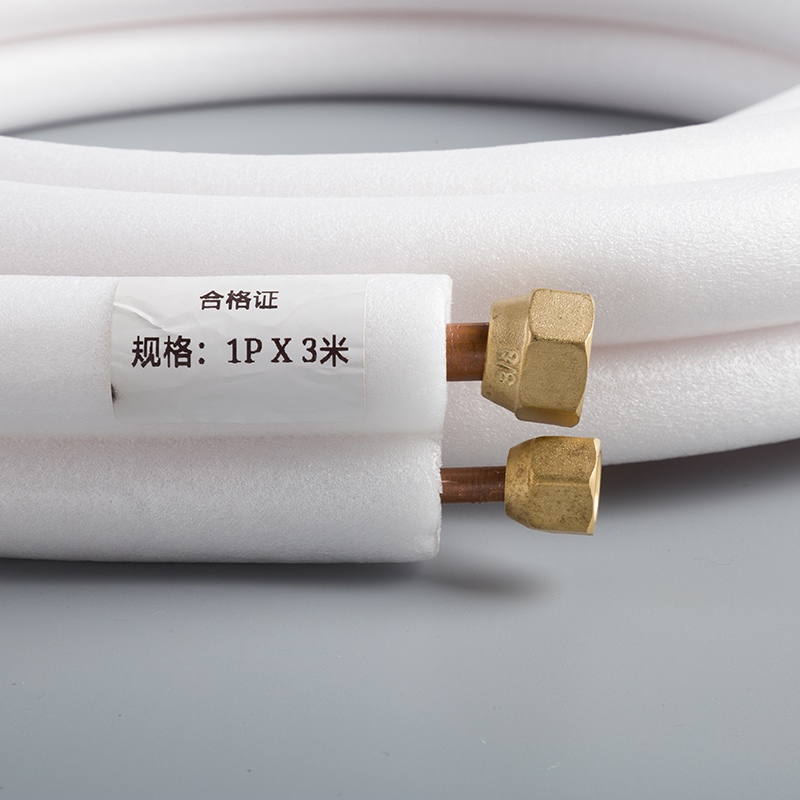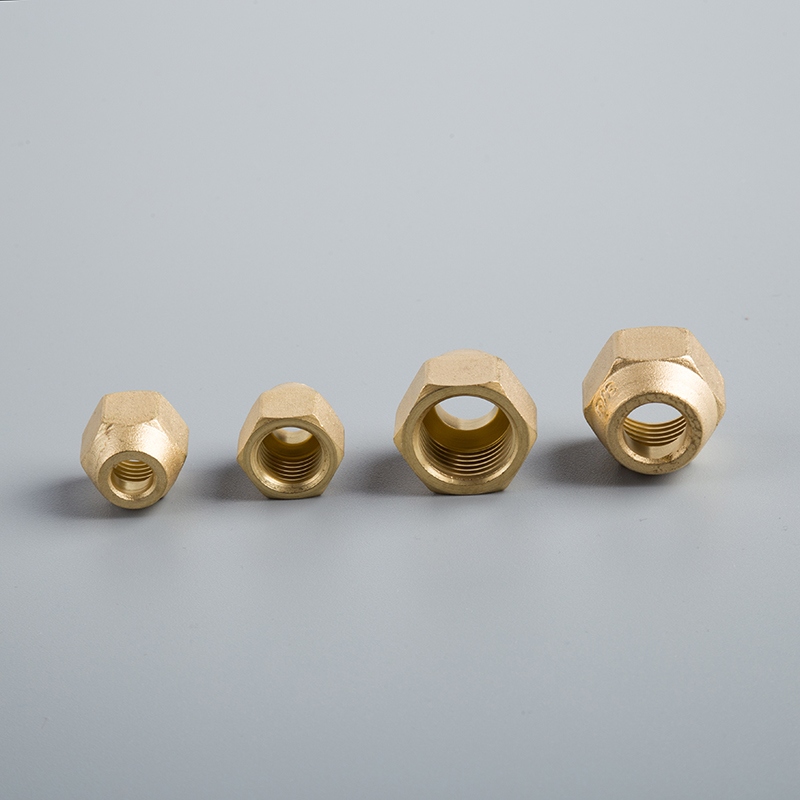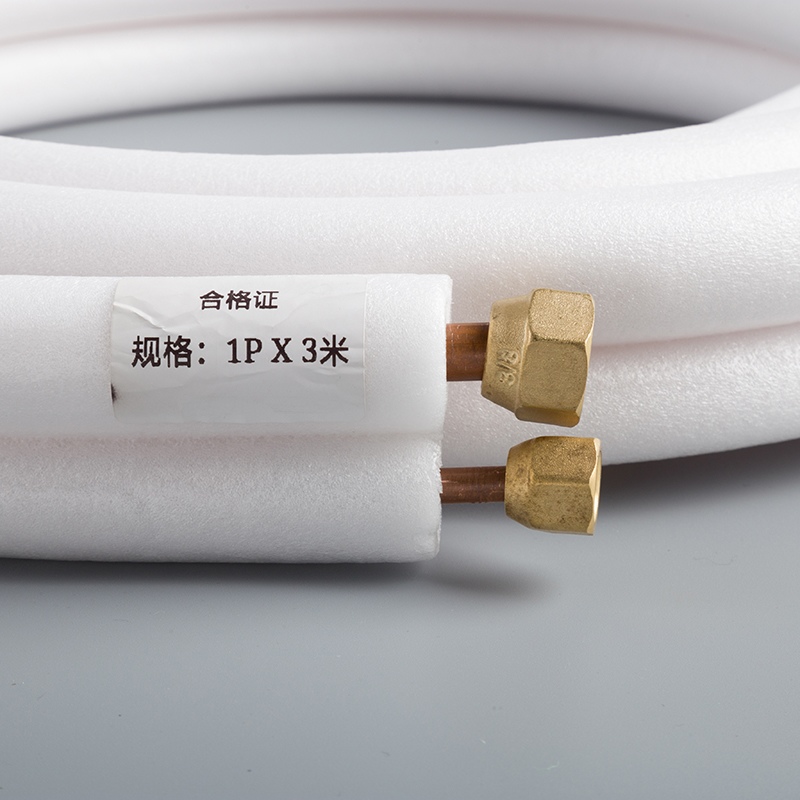Analyzing Copper Pipe Price Trends in AC Systems

Write a 'Trends' blog post on 'Price Trends of Copper Pipes in Air Conditioning Systems'
Copper pipes play a pivotal role in air conditioning systems, ensuring the seamless circulation of refrigerants under extreme conditions. Superior to aluminum alternatives, copper tubes offer unmatched strength, reliability, and exceptional heat transfer capabilities. The current market scenario witnesses a significant shift towards copper tubes dominating the HVAC and refrigeration sector. This analysis aims to delve into the market dynamics driving this transition and provide valuable insights for stakeholders.
Market Overview

Importance of Copper in AC Systems
Copper tubes are essential components in air conditioning and refrigerant systems. They facilitate the circulation of refrigerants under extreme pressures and temperatures, outperforming aluminum tubes in thermal conductivity and maintenance ease.
Role of Copper Pipes in AC Systems
Facilitating Refrigerant Circulation: Copper pipes ensure efficient refrigerant flow within air conditioning systems.
Enhanced Thermal Conductivity: Copper's superior heat transfer properties optimize the cooling process effectively.
Advantages of Using Copper
Reliability: Copper tubes offer unmatched strength and durability, ensuring long-term performance.
Ease of Maintenance: The inherent properties of copper make it easier to maintain compared to other materials.
Historical Price Trends
Over the last decade, the price trends of copper pipes in air conditioning systems have been influenced by various factors.
Price Trends Over the Last Decade
Fluctuations Reflecting Market Dynamics
Impact of Global Economic Conditions on Pricing
Key Factors Influencing Historical Prices
Raw Material Costs: Variations in raw material prices directly affect the final cost of copper pipes.
Market Demand: Increasing demand for air-conditioning systems globally has a significant impact on pricing stability.
Segmentation Analysis
By Type of Copper Pipe
Soft Copper Pipes
Soft copper pipes, known for their flexibility and ease of installation, are commonly used in residential water supply systems and plumbing applications for smaller buildings.
These pipes offer a cost-effective solution without compromising on durability, making them ideal for various household applications.
Soft copper pipes have thinner walls compared to other types, ensuring efficient water flow while maintaining structural integrity.
Hard Copper Pipes
Hard copper pipes, characterized by their rigid structure and durability, find extensive use in HVAC systems, fire protection, and industrial applications.
With thicker walls than soft copper pipes, hard copper pipes provide enhanced strength and resistance to high pressures.
The robust nature of hard copper pipes makes them suitable for demanding environments where reliability is paramount.
By Application in AC Systems
Residential AC Systems
In residential air conditioning systems, copper pipes play a crucial role in ensuring efficient refrigerant circulation and heat transfer.
The use of Type M copper pipes is common due to their optimal balance between wall thickness and cost-effectiveness.
Type M copper pipes are well-suited for household AC units, providing reliable performance while meeting budget constraints.
Commercial AC Systems
Commercial air conditioning systems rely on the durability and thermal conductivity of Type L copper pipes to maintain consistent cooling operations.
Type L copper pipes offer superior corrosion resistance and longevity, making them ideal for large-scale HVAC installations in commercial buildings.
The robust construction of Type L copper pipes ensures minimal maintenance requirements and prolonged service life.
By Region
North America
North America witnesses a steady demand for copper pipes in air conditioning systems driven by the region's thriving construction industry.
The use of Type K copper pipe is prevalent in North America due to its thick wall construction suitable for various HVAC applications.
Manufacturers in North America focus on innovation to enhance the efficiency and sustainability of copper pipe solutions for AC systems.
Europe
Europe embraces the versatility of soft copper pipes in residential AC systems while leveraging hard copper pipes for industrial cooling applications.
The adoption of eco-friendly materials aligns with Europe's sustainable practices, driving the demand for energy-efficient HVAC solutions using copper tubes.
Regulatory standards in Europe emphasize the importance of quality assurance in manufacturing processes to ensure reliable performance of copper pipe installations.
Asia-Pacific
Asia-Pacific showcases a growing preference for hard copper pipes in commercial AC systems to meet the region's expanding infrastructure needs.
The market in Asia-Pacific experiences innovations in manufacturing techniques aimed at enhancing the strength and durability of copper tubes for diverse applications.
Rapid urbanization across key economies drives the demand for advanced air conditioning solutions supported by high-quality copper piping systems.
Market Drivers and Challenges
Key Market Drivers
Increasing Demand for Energy-Efficient AC Systems
The market for copper pipes is being significantly influenced by the increasing demand for energy-efficient air conditioning systems worldwide.
Manufacturers are focusing on developing copper pipe solutions that enhance the energy efficiency of AC systems to meet the rising consumer expectations.
The emphasis on sustainability and reduced energy consumption is driving the adoption of copper pipes in HVAC applications, aligning with global environmental goals.
Technological Advancements
Technological advancements play a pivotal role in shaping the future of the copper pipes market within the air conditioning sector.
Innovations in manufacturing processes and materials are enabling the production of high-performance copper tubes tailored for modern AC systems.
The integration of advanced technologies enhances the durability, thermal conductivity, and overall efficiency of copper pipes, meeting the evolving needs of the HVAC industry.
Major Challenges
Fluctuating Raw Material Prices
Fluctuations in raw material prices pose a significant challenge to the stability of copper pipe prices in air conditioning systems.
Volatility in copper prices impacts manufacturing costs, leading to price variations that affect both suppliers and consumers within the HVAC market.
Market players need to implement strategic pricing mechanisms to mitigate risks associated with unpredictable fluctuations in raw material costs.
Environmental Regulations
Adherence to stringent environmental regulations presents a notable challenge for stakeholders operating in the copper pipes market for AC systems.
Regulatory standards aimed at reducing carbon emissions and promoting sustainable practices influence manufacturing processes and product development strategies.
Complying with environmental directives requires continuous innovation to ensure that copper pipe solutions meet eco-friendly criteria while maintaining optimal performance levels.
Current Trends and Future Forecasts

Emerging Trends
Adoption of Eco-Friendly Materials
The HVAC industry is witnessing a notable shift towards eco-friendly materials in copper pipe manufacturing, aligning with global sustainability goals.
Manufacturers are increasingly focusing on developing environmentally-conscious copper tubes to reduce carbon footprints and enhance energy efficiency.
This trend reflects the industry's commitment to promoting green practices and ensuring the long-term viability of air conditioning systems.
Innovations in Copper Pipe Manufacturing
Ongoing advancements in copper pipe manufacturing are driving innovations that cater to evolving HVAC requirements.
Cutting-edge technologies are revolutionizing the production processes, resulting in high-performance copper tubes with enhanced durability and thermal conductivity.
The continuous innovation in manufacturing techniques underscores the industry's dedication to delivering state-of-the-art solutions for air conditioning applications.
Market Forecasts
Short-Term Forecast (Next 1-2 Years)
In the short term, the market anticipates a steady growth trajectory for copper pipes in air conditioning systems.
Factors such as increasing demand for energy-efficient HVAC solutions and technological advancements are poised to drive market expansion.
Industry projections suggest a positive outlook for copper pipe usage, with a focus on enhancing system performance and sustainability.
Long-Term Forecast (Next 5-10 Years)
Looking ahead, the long-term forecast indicates sustained growth opportunities for copper pipes in AC systems.
Continued adoption of energy-efficient technologies and innovations in copper pipe design are expected to shape the future landscape.
Market players are projected to leverage these trends to meet consumer demands for reliable, eco-friendly air conditioning solutions.
Competitive Landscape
Major Players in the Market
Company Profiles
Wieland-Werke AG
A German company specializing in copper and copper alloy products.
Offers a wide range of copper tubes for plumbing, HVAC, electrical, and industrial sectors.
Cerro Flow Products LLC
Manufacturer of copper plumbing tubes, HVAC tubes, and industrial copper products.
Provides diverse copper pipes for residential, commercial, and industrial applications.
Mueller Industries Inc.
Leading manufacturer and distributor of copper tubes and fittings.
Serves industries such as plumbing, HVAC, refrigeration, and industrial applications.
Kobe Steel Ltd. (Kobe Copper Tube)
Major player manufacturing copper tubes for air conditioning, refrigeration, plumbing.
Supplies high-quality copper tubes for various industries.
KME Germany GmbH & Co KG
Global manufacturer of copper products for plumbing, HVAC, electrical sectors.
Produces top-grade copper tubes catering to diverse applications.
Cambridge-Lee Industries LLC
Prominent manufacturer of copper tubes and fittings globally.
Offers a wide range of industrial copper products to a global customer base.
Key Strategies and Developments
Companies like Wieland-Werke AG focus on innovation to enhance product quality and performance.
Cerro Flow Products LLC emphasizes sustainability in manufacturing processes to meet eco-friendly standards.
Mueller Industries Inc. invests in research to develop advanced technologies for efficient production.
Kobe Steel Ltd. (Kobe Copper Tube) prioritizes customer satisfaction by delivering tailored solutions for different industries.
KME Germany GmbH & Co KG aims at expanding its market presence through strategic partnerships and acquisitions.
Cambridge-Lee Industries LLC focuses on global expansion by establishing strong distribution networks worldwide.
SWOT Analysis
Strengths
Diverse product portfolio catering to various industry needs.
Strong emphasis on quality control measures ensuring reliable products.
Global presence with established market reputation.
Weaknesses
Vulnerability to raw material price fluctuations impacting production costs.
Dependency on external suppliers for certain components affecting supply chain stability.
Opportunities
Growing demand for energy-efficient solutions driving market expansion.
Technological advancements opening avenues for innovative product developments.
Threats
Intense market competition leading to pricing pressures among key players.
Regulatory changes impacting manufacturing processes and compliance requirements.
Key Findings: The analysis provides crucial insights into market sizes, competitive landscapes, and current trends. It also delves into cost analyses and supply chain evaluations, offering a comprehensive view of the Copper Pipes & Tubes Market.
Implications for Stakeholders: Technological advancements are anticipated to enhance product performance and drive wider acceptance across various applications. Understanding consumer behavior, market dynamics, opportunities, challenges, and drivers is essential for navigating the evolving market environment effectively.
Future Outlook: Expert validation and extensive secondary research data contribute significantly to comprehending the Air-Conditioning Copper Pipe Market. The industry's reliance on subject matter experts ensures robust findings, while diverse information sources outline a clear market landscape.
See Also
Benefits of Opting for Copper Tubing in Air Conditioning
The Advantages of Copper Piping for Air Conditioning Innovation
The Impact of Pure Copper Tubing on Air Conditioning
Exploring the Wonders of Pure Copper Tubing in AC Units
The Importance of Pure Copper Tubing for Effective Air Conditioning


